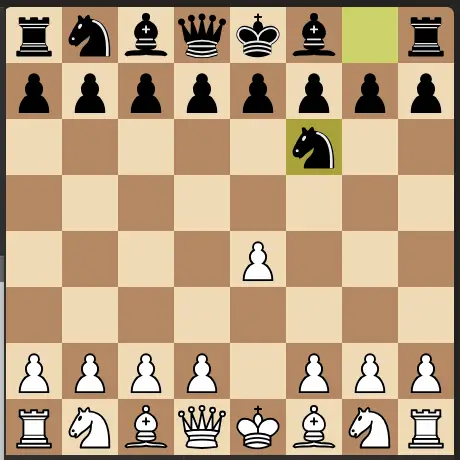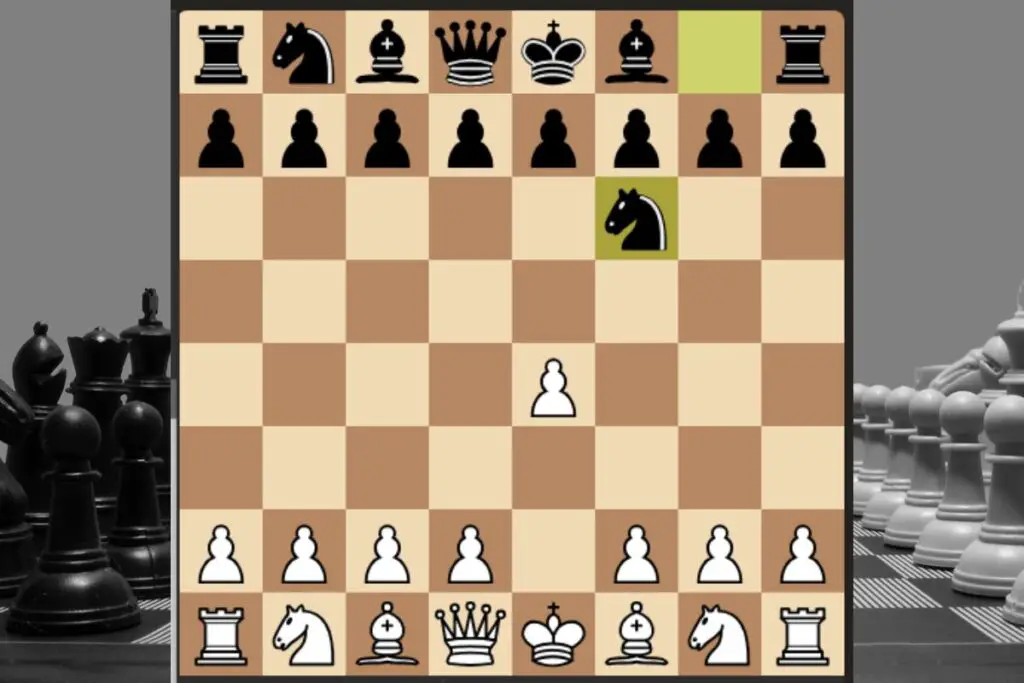The Alekhine Defense begins with the moves 1.e4 Nf6. The move Nf6 serves a dual purpose, developing a piece while simultaneously launching an attack on the e4 pawn.

The Alekhine Defense can lead to dynamic and unpredictable positions, although more restrained approaches are also commonly seen.
White has the opportunity to rapidly occupy the center with pawns, but the actual value of this extensive pawn center remains uncertain, as it could potentially create weaknesses in its wake.
World Champion Alexander Alekhine introduced this opening at the top level in 1921, which was highly unorthodox at the time, as players traditionally focused on establishing a central pawn with their first move.
Offering the opponent multiple central pawns while repeatedly moving the same knight appeared unconventional.
Nevertheless, the Alekhine Defense is now regarded as a standard and reasonably popular opening, having been employed by numerous strong Grandmasters like Magnus Carlsen, Bobby Fischer, and Hikaru Nakamura in serious games.
Is The Alekhine Defense Good?
The Alekhine Defense is a double-edged opening that can lead to sharp and complex positions. Whether it is considered “good” or not depends on the player’s style, level of understanding, and comfort with such positions. It has both its strengths and weaknesses.
Pros of the Alekhine Defense:
Surprise factor: The Alekhine Defense is relatively rare compared to more mainstream openings, so opponents may not be as familiar with the positions and ideas, giving you a chance to catch them off guard.
Imbalance: The opening leads to imbalanced positions, which can create winning chances for both sides. It offers dynamic and rich gameplay, providing an opportunity for creative players to find unique plans and tactics.
Counterattacking opportunities: By allowing White to establish a large pawn center, Black aims to provoke weaknesses in White’s position, which can be exploited later in the game through counterattacks.
Cons of the Alekhine Defense:
Risky: The opening’s dynamic nature and the early pawn advances by White can lead to complications and potential traps, making it a riskier choice for less experienced players.
Development delay: Black moves the same knight multiple times in the opening, which delays the development of other pieces and gives White a lead in development, potentially creating difficulties in the middlegame.
Unfamiliarity: As the Alekhine Defense is not as widely played as other openings, some players might struggle to find suitable resources or may face opponents well-prepared in rare lines.
In summary, the Alekhine Defense can be a viable and exciting option for players who are comfortable with dynamic and unbalanced positions.
It has been played successfully by strong Grandmasters, but like any opening, its effectiveness ultimately depends on the player’s understanding and ability to handle the ensuing positions.
If you are interested in trying it out, studying and practicing the Alekhine Defense can help you become proficient in this opening and understand its nuances better.
How To Counter the Alekhine Defense As White
Countering the Alekhine Defense requires a strategic approach and a solid understanding of the opening’s main ideas. Here are some general guidelines on how to handle the Alekhine Defense:
Control the center: Since Black aims to provoke White’s pawn center, it is essential for White to maintain control over the central squares (d4 and e5). This can be achieved through pawn advances or piece development that supports the central pawns.
Develop actively: Focus on rapid and purposeful piece development to avoid falling behind in the opening. Develop your pieces to natural squares, aiming for a harmonious setup.
Be cautious with pawn advances: While establishing a pawn center is a common strategy in many openings, be mindful of potential weaknesses and overextension. Black may target these weaknesses to create counterplay.
Consider transposing: If you are uncomfortable with the Alekhine Defense lines, you can try to transpose to other openings like the Four Knights Game or the Scotch Game, where you can avoid the complexities of the Alekhine.
Study specific lines and tactics: Familiarize yourself with the critical lines and main variations of the Alekhine Defense. Look for tactical ideas, potential traps, and ways to exploit Black’s early knight moves.
Aim for a favorable endgame: If you can maintain a slight advantage in the opening, focus on steering the game towards an endgame where your superior pawn structure and better piece coordination could be advantageous.
Don’t underestimate your opponent: Remember that the Alekhine Defense can lead to sharp and unbalanced positions, where accurate play is crucial. Treat your opponent’s choices with respect and avoid complacency.
To counter the Alekhine Defense effectively, it is recommended to study various resources, including books, videos, and games played by strong players. This will help you gain a deeper understanding of the opening and develop a repertoire that suits your style of play.
Final Thoughts


